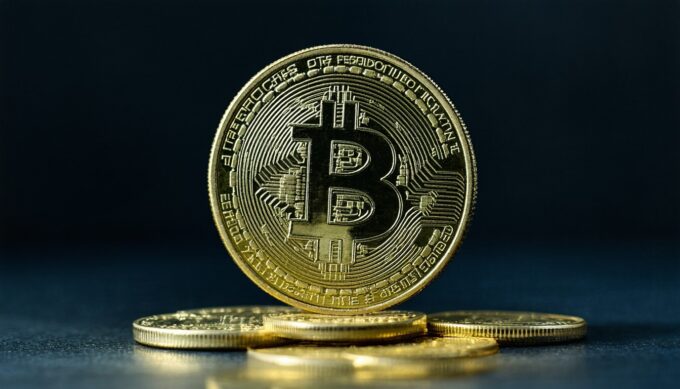As digital assets mature, exchange-traded funds (ETFs) tied to cryptocurrencies have become a focal point for investors and institutions alike. The successful launches of Bitcoin and Ethereum ETFs in certain major markets have only heightened speculation about which digital asset could be next. Among these, Ripple’s XRP stands out — not only for its unique technology and global payments use case but also for its complex regulatory backdrop. The potential for an XRP ETF looms large in current financial discourse, offering both formidable opportunities and unanswered questions for the digital asset industry. This article unpacks the latest XRP ETF news, explores regulatory and market dynamics, and offers expert insights on what approval could mean for the future of crypto investing.
The Case for an XRP ETF: Why Now?
Market Demand and Legitimacy
Interest in an XRP ETF has surged amid growing recognition of digital asset ETFs as efficient, regulated entry points for mainstream and institutional investors. Bitcoin spot ETFs in the U.S., for instance, witnessed record inflows and sparked sector-wide rallies, underlining substantial latent demand. XRP, currently among the largest cryptocurrencies by market capitalization, is frequently cited alongside Bitcoin and Ethereum as a leading candidate for ETF inclusion.
The prospect of an XRP ETF is fueled by:
- A desire to offer diversified exposure to crypto beyond Bitcoin and Ethereum.
- XRP’s established utility in international payments, making it an attractive asset for investors wanting real-world use cases.
- Ripple’s persistence through regulatory hurdles, which, if resolved, could clear a major path for ETF approval.
Supporting these factors, a recent survey by a major crypto analytics firm indicated that a significant portion of institutional investors would consider exposure to an XRP ETF, should it become available.
Regulatory Headwinds and Precursors
Unlike Bitcoin and Ethereum, which have garnered clearer regulatory paths in the U.S., XRP has navigated prolonged scrutiny, culminating in Ripple Labs’ high-profile legal clash with the Securities and Exchange Commission (SEC). While Bitcoin and Ethereum have been deemed commodities, XRP’s status remains a linchpin issue. In 2023, a court ruling partially favored Ripple, stating that secondary market sales did not constitute securities transactions, but uncertainty persists.
Until this status is definitively settled by regulators, most analysts believe a formal XRP ETF approval in the U.S. is unlikely. However, developments in international jurisdictions and the evolving American regulatory approach (as seen with the push-and-pull over spot Ethereum ETFs) continue to influence sentiment and anticipation.
Recent Developments: Tracking the Latest XRP ETF News
Global ETF Trends and Ripple’s Position
Over the past year, several financial institutions have shown interest in offering a broader suite of crypto products, including exchange-traded products linked to altcoins like XRP. Notably, markets such as Canada and parts of Europe have permitted a wider array of digital asset ETPs (exchange-traded products), though regulatory clarity and liquidity remain challenges.
- In Canada, crypto ETFs already encompass multiple assets beyond Bitcoin and Ethereum, but XRP products have not yet launched.
- In Europe, issuers such as 21Shares have introduced ETPs for Ethereum, Solana, and other tokens, with XRP ETPs available on select exchanges.
These global moves are closely tracked by U.S. asset managers, who often view foreign approvals as test cases for domestic products, pending regulatory sign-off.
Ripple’s Public Stance and Industry Chatter
Ripple’s leadership remains vocal in its support for an XRP ETF. CEO Brad Garlinghouse has publicly stated that the launch of such a product would be a milestone for “bridging institutional capital with the utility of the XRP Ledger.”
Industry analysts frequently weigh in on the timeline and likelihood of ETF approval:
“The green light for an XRP ETF hinges not just on legal clarity, but on demonstrated investor demand and operational readiness. As crypto matures, multi-asset ETFs will become the norm. XRP could play a leading role in that evolution — provided the regulatory climate evolves in its favor,”
said a senior strategist at a leading crypto asset management firm.
Market observers also note that increased dialogue between crypto firms and regulatory bodies could accelerate product innovation, contingent on constructive engagement and definitive rulings.
Factors Influencing Potential XRP ETF Approval
Regulatory Landscape in the U.S.
The U.S. remains the linchpin for global ETF adoption and liquidity. The SEC has established a rigorous precedent, evaluating each crypto ETF proposal for:
- Underlying asset classification (commodity vs. security).
- Market surveillance adequacy to prevent manipulation.
- Sufficient liquidity and pricing transparency.
While Bitcoin’s commodity status fast-tracked approvals, the undecided nature of XRP’s regulatory footing is a persistent hurdle. Any change in the SEC’s stance — whether through court decisions, legislative action, or evolving precedents from other crypto ETFs — could shift the landscape rapidly.
Institutional Readiness and Infrastructure
Beyond regulatory approval, the ecosystem’s readiness to support an XRP ETF is key. This covers:
- Custody solutions meeting institutional-grade security requirements.
- Pricing indices and robust liquidity data for fair NAV calculations.
- Efficient settlement systems to support potential inflows and outflows without market disruption.
Major institutions already provide some infrastructure for XRP, but further enhancements will likely be necessary as ETF prospects clarify.
Potential Market Impact of an XRP ETF
Broadening Access and Deepening Liquidity
The approval of an XRP ETF could catalyze a new chapter for both XRP and the broader altcoin market. History suggests that ETF launches tend to:
- Broaden investor access by enabling direct purchasing through brokerage accounts.
- Deepen liquidity and pricing efficiencies due to institutional trading volumes.
- Encourage mainstream media coverage and promote further education on digital assets.
Following the introduction of spot Bitcoin ETFs, trading volumes soared and mainstream adoption saw a meaningful acceleration. Should XRP follow in those footsteps, the market could see renewed capital flows and increased price discovery.
Diversification and Portfolio Construction
From a portfolio perspective, the addition of an XRP ETF would enable more nuanced diversification strategies. Investors commonly seek broad exposure to blockchain assets with differentiated use cases and risk-return profiles. XRP’s role as a bridge currency for cross-border settlements sets it apart from more “store-of-value” oriented assets.
ETF-structured vehicles are particularly attractive for:
- Financial advisors building diversified crypto allocations for clients.
- Pension funds and endowments with mandates prohibiting direct crypto custody but allowing ETF exposure.
Challenges and Unresolved Issues
Ongoing Legal and Regulatory Questions
The most significant obstacle remains legal ambiguity. Observers caution that the SEC may issue further rulings or guidance that impact XRP’s eligibility, especially as Ripple’s litigation continues to progress and lawmakers weigh national crypto legislation.
Another consideration is anti-money laundering (AML) and know-your-customer (KYC) frameworks. U.S. regulators may require enhanced controls on crypto-related ETFs versus traditional assets, setting a potentially high compliance bar for XRP products.
Market Structure Limitations
Even if regulatory concerns are addressed, market structure — such as liquidity depth, exchange listings, and volatility management — will play a role. Some ETFs linked to smaller digital assets have suffered from thin trading and sharp price swings, complicating institutional adoption.
Developing mechanisms for fair valuation, especially during periods of volatility, represents another technical hurdle that will require ongoing innovation.
Conclusion: Outlook for XRP ETF News and Approval
The road to an XRP ETF is complex, combining market enthusiasm with formidable regulatory and operational challenges. Despite the current lack of approval in the United States, international trends, strong investor interest, and Ripple’s advocacy suggest that the conversation is far from over. For now, investors and industry watchers should monitor legal developments, regulatory guidance, and infrastructure advances that shape the potential for XRP’s inclusion in mainstream ETF products.
If the regulatory climate grows more permissive, and infrastructure keeps pace, an XRP ETF could quickly become reality—ushering in new opportunities for portfolio diversification and market maturation.
FAQs
What is an XRP ETF?
An XRP ETF would be an exchange-traded fund that tracks the price of XRP, allowing investors to gain exposure to the digital asset through traditional brokerage accounts without directly holding the cryptocurrency.
Why hasn’t an XRP ETF been approved yet?
Regulatory uncertainties, particularly surrounding whether XRP is classified as a security or commodity in the U.S., have been the main barrier. Ongoing litigation and evolving regulatory policies add further complexity.
How would an XRP ETF impact the crypto market?
If approved, an XRP ETF could boost liquidity, promote mainstream adoption, and widen access to XRP for institutional investors. It may also encourage more diverse investment products within the crypto ETF sector.
Are there XRP ETFs available outside the United States?
Select European exchanges offer XRP-linked ETPs (exchange-traded products), and similar products may appear in other jurisdictions with more permissive regulatory environments. However, major global markets like the U.S. have not yet approved such funds.
What factors influence a regulator’s decision to approve a crypto ETF?
Regulators typically examine the underlying asset’s status (security or commodity), market transparency, liquidity, and the ability to prevent manipulation. Comprehensive compliance with investor protection standards is also required.
What should investors watch for regarding future XRP ETF news?
Investors should monitor legal updates in the Ripple-SEC case, statements from major regulators, and evolving infrastructure from institutional service providers that could pave the way for future approvals.









Leave a comment